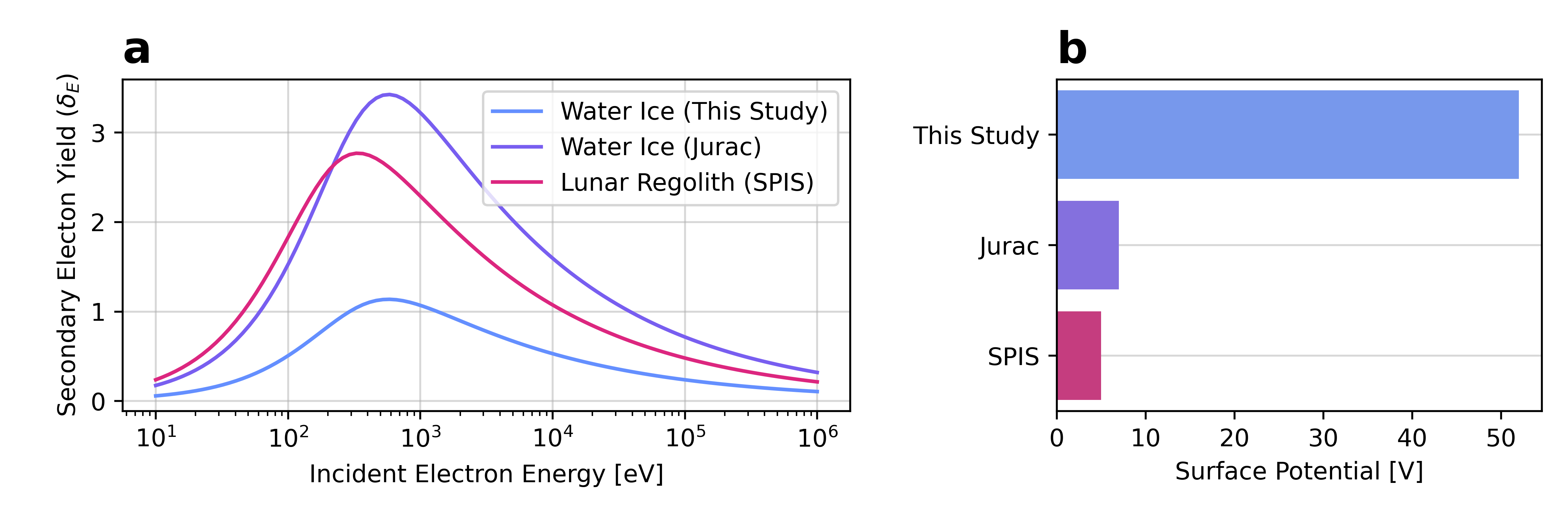MIST
Magnetosphere, Ionosphere and Solar-Terrestrial
Surface Charging of Jupiter's Moon Europa
By Sachin Reddy (UCL / National Institute of Polar Research)
Jupiter’s moon Europa is exposed to a constant flow of plasma from its own ionosphere and the Jovian magnetosphere, which consists of a thermal and suprathermal population. As these particles flow onto the surface, an electrostatic potential forms in accordance with Kirchhoff’s current law. In this study, we investigate the electric charging of Europa’s icy surface using 3D particle-in-cell simulations via the Spacecraft Plasma Interactions Software (SPIS).
We find that surface potentials on Europa vary from -14 to -52 V. They change as a function of Europa’s four hemispheres, the solar illumination conditions, the plasma environment, and the properties of the surface itself. We reveal that the presence of an ionospheric plasma population reduces the surface potentials, producing a “dampening effect”. We also find that secondary electron emission is a crucial mechanism in Europan charging, shifting potentials by an order of magnitude for the same plasma properties. We argue that additional laboratory work into Europa-like-ice electron emission is necessary to reduce the uncertainties in the modelling. These results could be both corroborated and improved upon by the upcoming Europa Clipper and JUICE missions, and may be of use in the design of future missions to Europa’s surface (e.g. landers or other robotic explorers).

See full paper for further details:
Reddy, Sachin A., Nordheim, Tom N. and Harris, Camilla, D.K.,. "Surface Charging of Jupiter’s Moon Europa." The Astrophysical Journal Letters 962.2 (2024): L29. https://doi.org/10.3847/2041-8213/ad251e